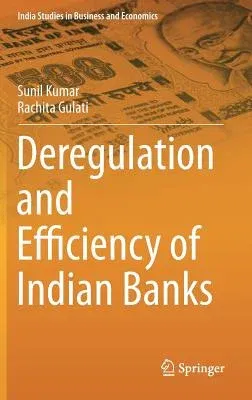Sunil Kumar
(Author)Deregulation and Efficiency of Indian Banks (2014)Hardcover - 2014, 18 November 2013

Qty
1
Turbo
Ships in 2 - 3 days
In Stock
Free Delivery
Cash on Delivery
15 Days
Free Returns
Secure Checkout

Part of Series
India Studies in Business and Economics
Print Length
323 pages
Language
English
Publisher
Springer
Date Published
18 Nov 2013
ISBN-10
8132215443
ISBN-13
9788132215448
Description
Product Details
Authors:
Book Edition:
2014
Book Format:
Hardcover
Country of Origin:
NL
Date Published:
18 November 2013
Dimensions:
23.39 x
15.6 x
2.06 cm
ISBN-10:
8132215443
ISBN-13:
9788132215448
Language:
English
Location:
New Delhi
Pages:
323
Publisher:
Weight:
662.24 gm